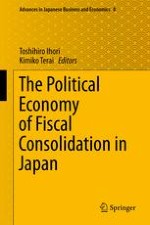2015 | OriginalPaper | Buchkapitel
5. Public Policy and Economic Growth in the Integrating Japanese Economy
verfasst von : Hiroki Kondo
Erschienen in: The Political Economy of Fiscal Consolidation in Japan
Verlag: Springer Japan
Aktivieren Sie unsere intelligente Suche, um passende Fachinhalte oder Patente zu finden.
Wählen Sie Textabschnitte aus um mit Künstlicher Intelligenz passenden Patente zu finden. powered by
Markieren Sie Textabschnitte, um KI-gestützt weitere passende Inhalte zu finden. powered by
